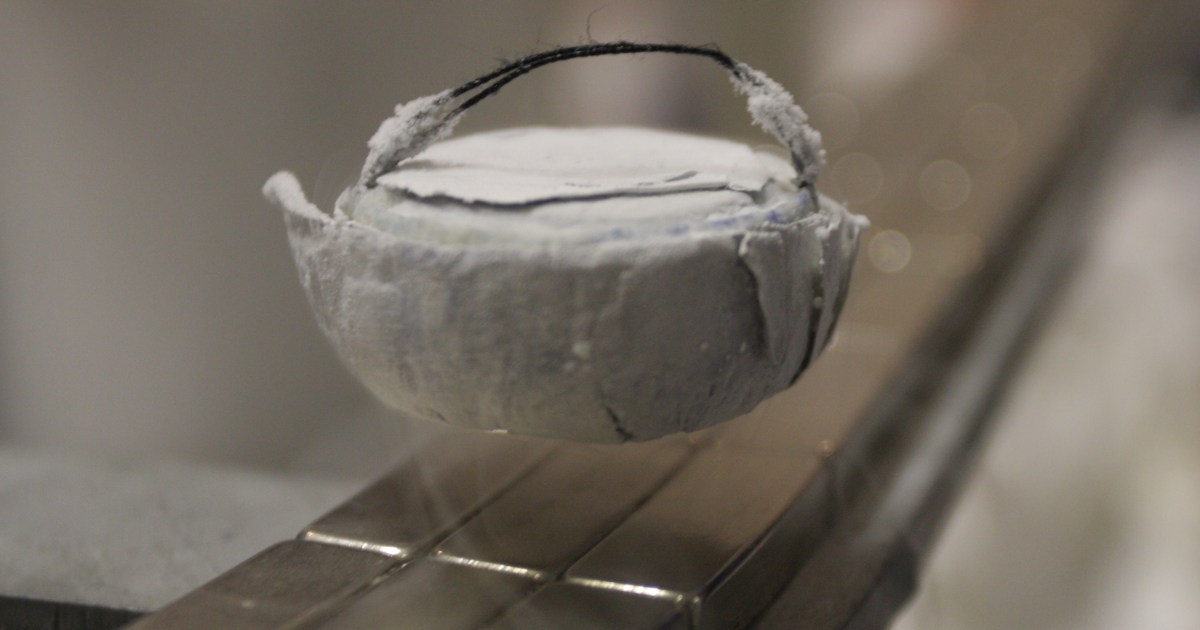- Joined
- Jun 10, 2018
- Messages
- 6,249
- Likes
- 9,389
Are you planning for his demise?Electrically, maybe.
Sonically, no.
And you're likely to be dead before it happens anyway.
Are you planning for his demise?Electrically, maybe.
Sonically, no.
And you're likely to be dead before it happens anyway.

There are a number of "high temperature" types, but "high" means nitrogen (77 K) instead of helium (4 k), still not terribly user-friendly. AFAIK all the room-temperature ones have been disproven (i.e. fraudulent) or impractical so far. There were some promising models but I quit following some years ago when I was no longer running into them on research contracts and such.Refrigeration and pressure requirements will keep superconductors in the lab or submerged in liquid helium, an unobtainium if I ever saw one for the foreseeable future.
This is the reason why nearly all superconducting materials only superconduct at extremely low, near-absolute-zero temperatures: the electrons in the solid material must spontaneously develop that critical energy gap in their spectrum, and then that gap must be filled not by individual electrons, but by pairs of electrons that form and remain in these Cooper pair states. Electrons cannot “jump up” from the filled energy levels from below, and they must not be too energetic so that they pop up out of this band into the higher-energy excited states above it. The hotter your system is, the more particles there are that will spontaneously have enough energy to cause one of those two conditions to be violated, bringing an end to your superconducting state.

Interesting article but is this true?
Room temperature superconductivity is hard. LK-99 illustrates why
LK-99, almost certainly, isn't a room-temperature superconductor. The underlying physics of the phenomenon helps us understand why.bigthink.com
JSmith
AFAIK most (all?) HTS come as kind of a powder which makes it really hard to produce a wire.There are a number of "high temperature" types, but "high" means nitrogen (77 K) instead of helium (4 k), still not terribly user-friendly. AFAIK all the room-temperature ones have been disproven (i.e. fraudulent) or impractical so far.
It does. There are probes for NMR spectrometers which use cryocooled preamps to reduce noise.Superconductivity can do things like SQUID magnetic sensors and heterodyne converters. I doubt it will change audio. But I think refrigerating circuits can reduce noise.
Yup.First searching for a room temperature superconductor solution.
Marketing has no "need", just "want", and ignorant consumers guided by sleazy dealers.Then searching for an audio equipment need for that solution.
Inductors, transformers, loudspeaker voice coils and field coils, basically everything where ohmic resistance is an unwanted parasitic property.Then searching for an audio equipment need for that solution.
I can see an advantage in speakers where voice coil weight matters, to a point where the cone weight swamps the voice coil (are we already there?). Transformers, not so much. There already at 90% efficiency, most of the waste is non-ohmic, and most of the weight/cost is in the core. (is there such a thing as supermagnetic?) You could make air core inductors smaller but they certainly would be a lot more expensive.Inductors, transformers, loudspeaker voice coils and field coils, basically everything where ohmic resistance is an unwanted parasitic property.
The main advantage in speaker voice coils is, of course, better thermals but not only. Damping (local feedback) via back-EMF would be adjustable over a much wider range (by amplifier source impedance) and would be much more stable.I can see an advantage in speakers where voice coil weight matters, to a point where the cone weight swamps the voice coil (are we already there?). Transformers, not so much. There already at 90% efficiency, most of the waste is non-ohmic, and most of the weight/cost is in the core. (is there such a thing as supermagnetic?) You could make air core inductors smaller but they certainly would be a lot more expensive.
